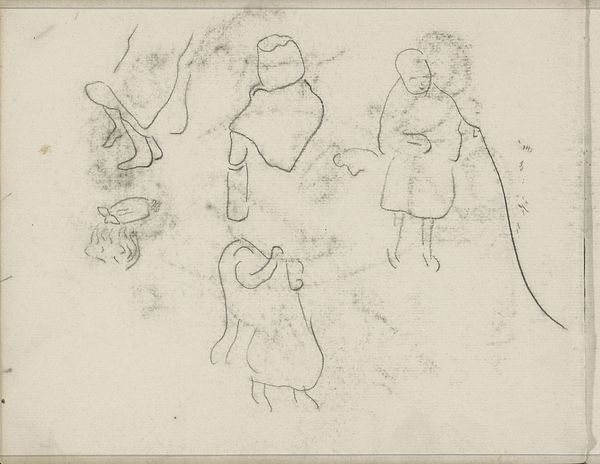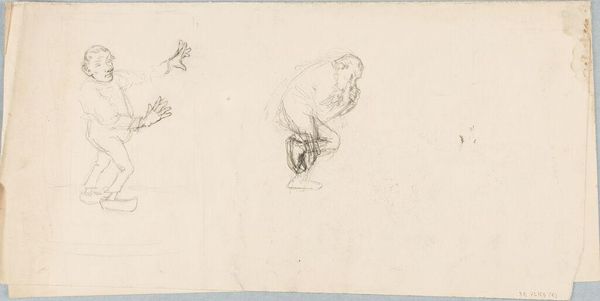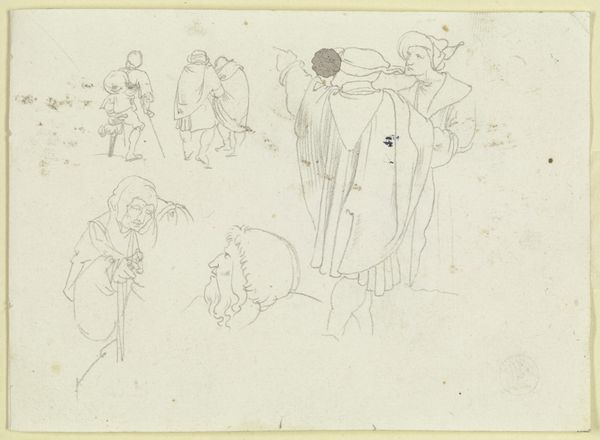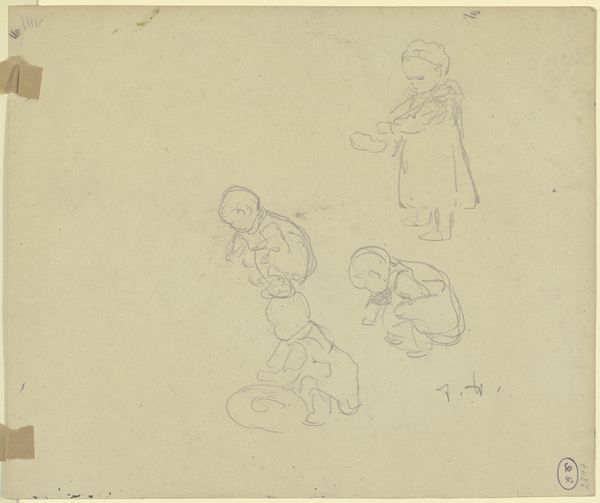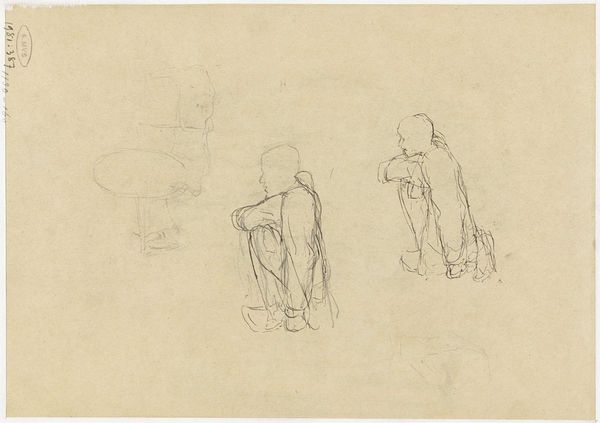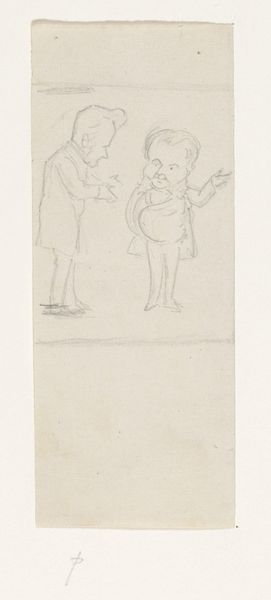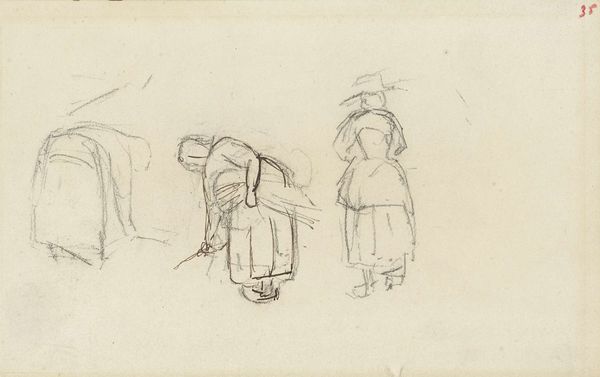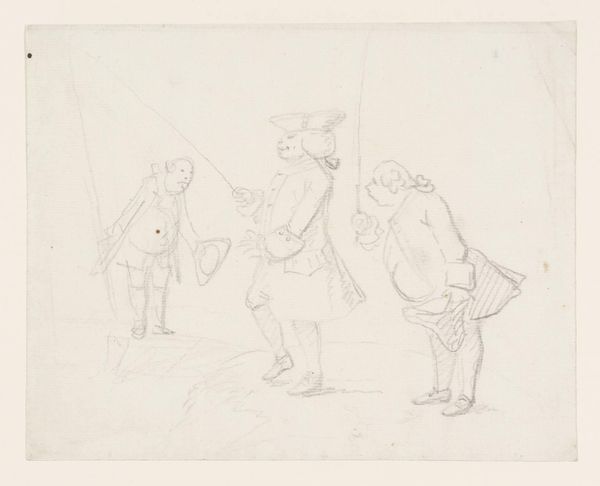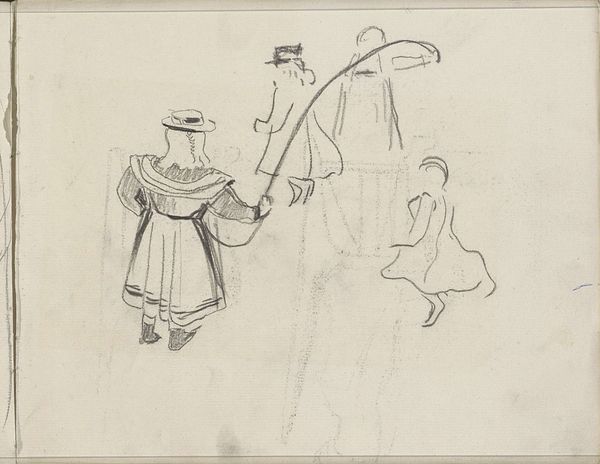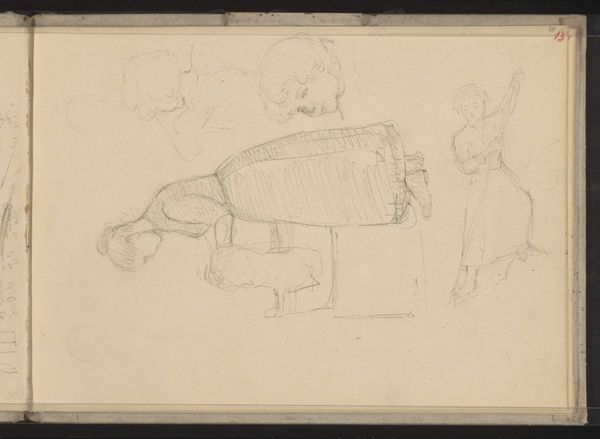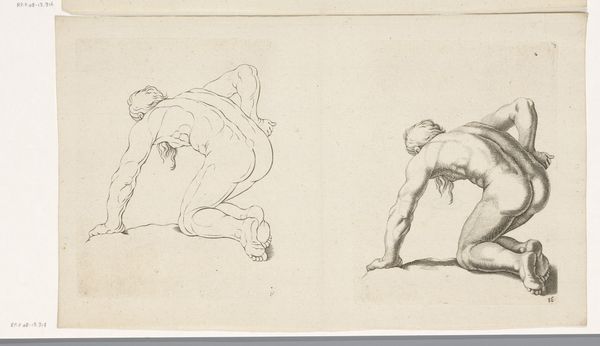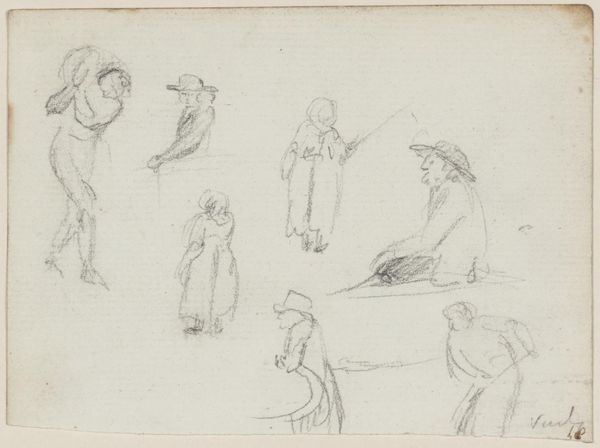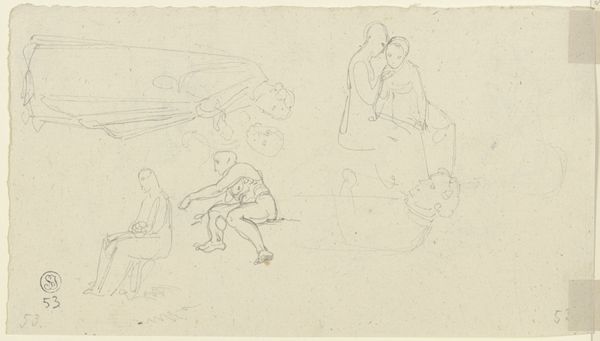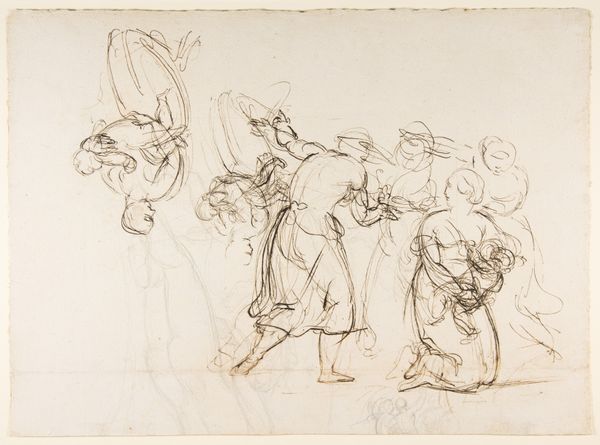
Vorgebeugter, an einem Wagen hantierender Mann sowie eine männliche Rückenfigur mit weitem Mantel, Kapuze und Stab (Pilger_), beide in Kostümen des 16. Jahrhunderts 1816 - 1817
0:00
0:00
drawing, pencil
#
drawing
#
16_19th-century
#
figuration
#
german
#
pencil
#
genre-painting
Copyright: Public Domain
Curator: Here we have Carl Philipp Fohr’s 1816-1817 pencil drawing, titled "Vorgebeugter, an einem Wagen hantierender Mann sowie eine männliche Rückenfigur mit weitem Mantel, Kapuze und Stab (Pilger_), beide in Kostümen des 16. Jahrhunderts." Quite a mouthful! What strikes you first about it? Editor: It feels like a whisper, almost unfinished. The stark white paper against those delicate pencil lines creates a dreamlike quality. There is the sense of fleeting motion, and that the artist wanted to capture movement more than realism. Curator: Interesting, and quite relevant! Fohr, active in the early 19th century, aligned himself with the Lukasbund, a group interested in revisiting earlier artistic modes. This drawing embodies their inclination toward the aesthetic of the 16th century through costume and composition. Editor: I see the deliberate attention to the fall of the fabric, especially on the figure with the hood and cape, even if only hinted at. The lines suggest depth and texture with minimal shading. The contrast between the straining figure and the static pilgrim offers a study in form and balance. Curator: Precisely! He seeks to evoke not just the physical likeness, but an idealized, almost nostalgic version of the past. Genre painting and figuration are two significant components here, yet they lack some social context in favor of portraying these "types". The figure with his wagon alludes to labor and everyday life. The pilgrim perhaps invokes more spiritual ideas in a changing and uncertain world after the Napoleonic wars. Editor: So it's not just about aesthetic imitation, but about using historical imagery to comment on contemporary society. Very clever. Curator: Indeed! The deliberate return to an older aesthetic suggests Fohr was looking for a visual language with which to process modern disruption. Editor: On second viewing, I appreciate that Fohr provides minimal context in his scene. By leaving everything as sketched outlines, we focus on each character and what they may symbolize. It's a raw glimpse into the past—or rather, Fohr’s concept of it. Curator: Absolutely, and that conceptualization tells us just as much about the early 19th century as it does about the 16th. Thanks for teasing out these interesting connections!
Comments
No comments
Be the first to comment and join the conversation on the ultimate creative platform.
